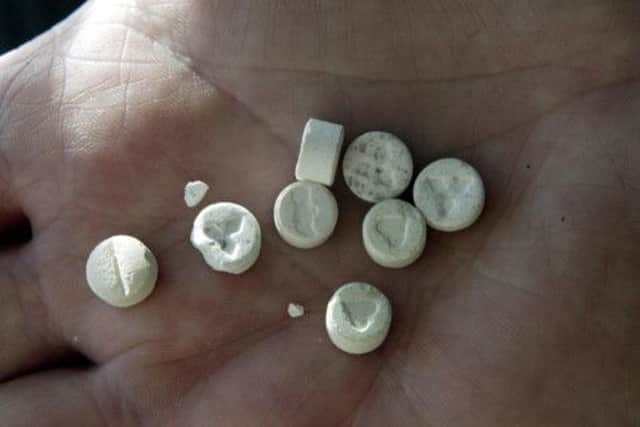UK is Europe’s legal highs capital, report warns


The United Nations Office on Drugs and Crime also found that attempts to ban emerging drugs in the UK are not deterring producers abroad.
The UNODC estimated that 670,000 Brits, between the ages of 15 and 24, would have experimented with so-called legal highs.
Advertisement
Hide AdAdvertisement
Hide AdIts World Drug Report 2013 said: “The largest market for legal substances that imitate the effects of illicit drugs in the European Union is the United Kingdom.”
There has been growing concern about the popularity of legal highs in Scotland.
A summit was held in Edinburgh, in April, bringing together police, government officials and experts.
It was in response to intelligence showing production had accelerated in Europe earlier in the year.
Last summer, Alex Herriot, 19, from Edinburgh, died at the RockNess festival near Inverness after taking a substance known as Benzo Fury which mimics the effects of the class-A drug Ecstasy.
And in November, a 12-year-old boy in Nairn had to be taken to hospital after reportedly taking a legal high.
Although generally referred to as legal highs, the drugs often contain banned substances.
Many of the best known, such as mephedrone, Benzo Fury, and BZP, have long been criminalised.
Advertisement
Hide AdAdvertisement
Hide AdHowever, this is not stopping their flow into the UK, the UNODC warned.
“Most of the ‘legal highs’ in Europe were identified in the United Kingdom, even though some of those substances were, officially, already under generic control there, perhaps indicating that many (often foreign) manufacturers and consumers were not aware that they were illegal substances,” it added.
The World Drug Report 2013 included figures on UK deaths between 2007 and 2010.
Deaths related to cocaine, amphetamines, and ecstasy all fell sharply.
However, fatalities involving synthetic cathinones - commonly known as bath salts to avoid detection - rose from eight to 65, largely driven by mephedrone deaths.
Prior to April’s conference, Detective Inspector Garry Mitchell gave the Scottish Government three options for tackling legal highs.
It has not disclosed what these are, but is expected to announce a plan soon.
A Scottish Government spokeswoman said: “While the classification of drugs is a reserved matter, we very much recognise the challenges posed by new psychoactive substances, also known as legal highs, and that is why we hosted a national event in April to discuss this very issue, where the Minister for Community Safety was joined by representatives from the police, health, community and youth organisations.
Advertisement
Hide AdAdvertisement
Hide Ad“We are now seeking to take forward a range of work with partners in response to the issues which emerged from that event.
“Overall, our message to those using such substances is clear – the health implications of taking ‘legal highs’ can be just as serious as controlled drugs and users are acting as guinea pigs for untested and unregulated substances.
“We need to challenge the myth that legal equals safe.”
The UK Government, which has the power to declare substances illegal, is also taking steps to tackle the threat.
Jeremy Browne, crime prevention minister, said: “The UK is leading the global effort to address the serious threat from ‘legal highs’, adapting and innovating as new trends emerge.
“We have introduced temporary class drug orders, a swift legislative response to protect the public while our independent experts prepare advice.
“We are working with law enforcement agencies overseas to break down supply chains and reduce demand. We have led a new G8 agreement to share intelligence on ‘legal highs’, the impact they have on public health and their supply routes.
“Our Forensic Early Warning System and the Advisory Council on the Misuse of Drugs continue to closely monitor the prevalence and availability of these substances. We remain vigilant to the threat and committed to removing harmful substances from UK streets.”